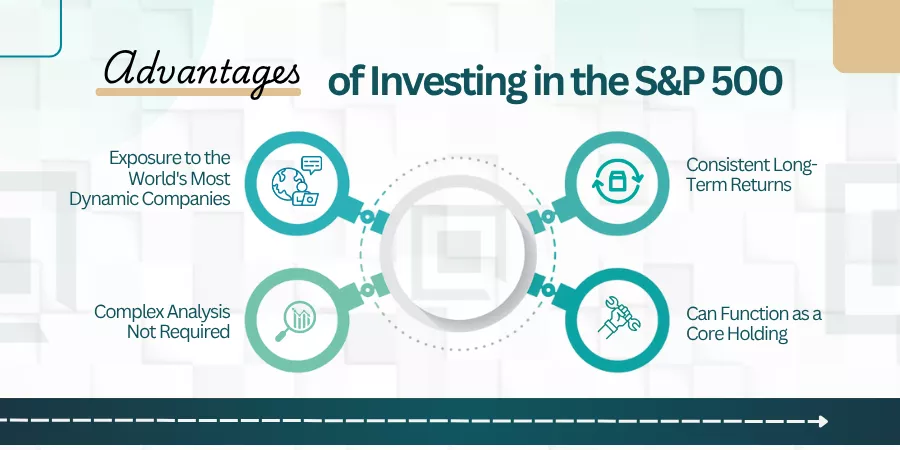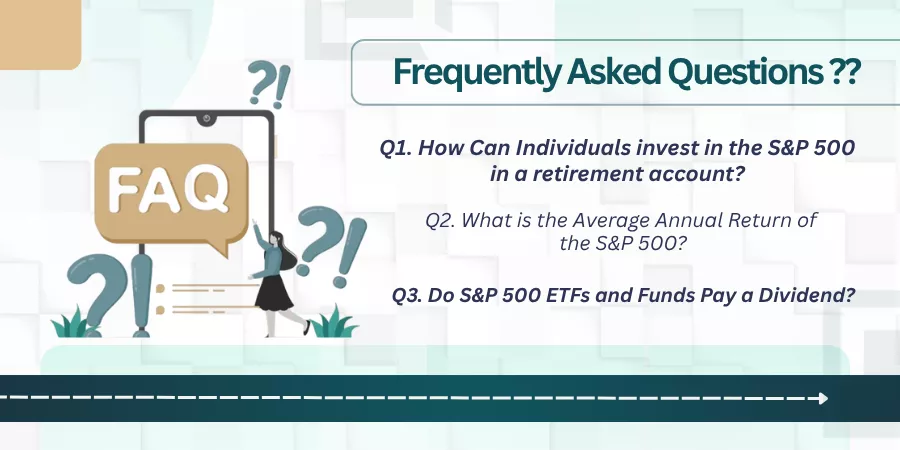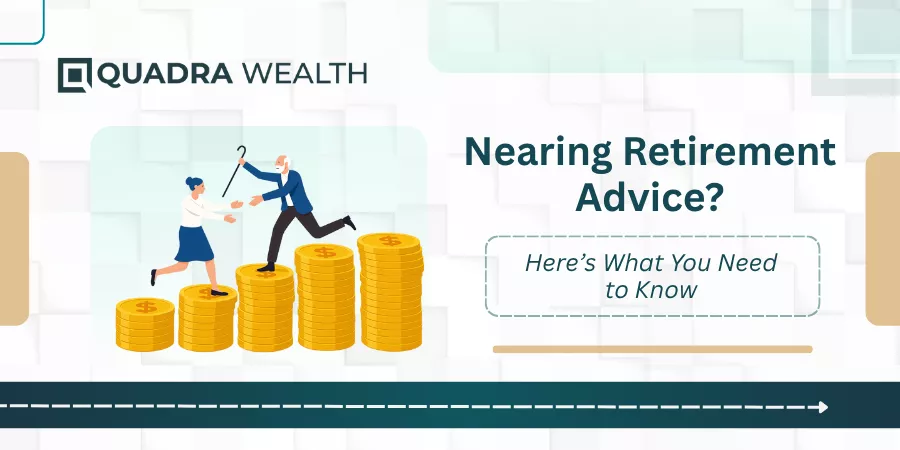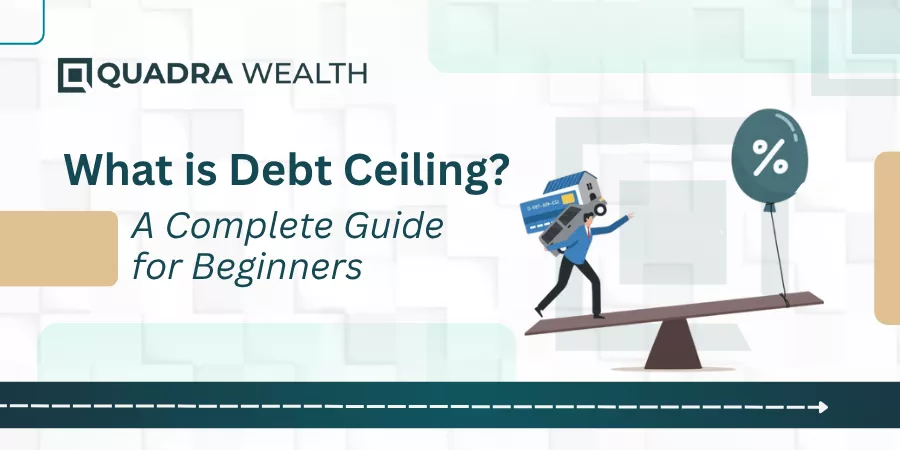The S&P 500 is a popular stock market index, not an investment itself. But it’s a catalog of 500 leading international companies that are associated in some way or otherwise combined. Individuals cannot directly invest in a stock market index, such as the S&P 500. But they can invest through index fund or exchange-traded fund (ETF) fund that follows the index.
To invest in an index, investors can choose an IRA investment account, a 401(k) plan, or a taxable brokerage account. The S&P 500 tracks the largest companies in the United States, based on factors such as liquidity, sector allocation, and market capitalization.
This article provides additional insights into how to invest in S&P 500. Let’s have a glimpse:
What Does It Mean to Invest in the S&P 500?
To invest in the index like the S&P 500 means allocating your funds to a financial product that tracks the performance of the S&P 500. The S&P 500 is a list of big companies in the U.S. stock market. People watch it to get a sense of how the market is doing.
A lot of folks think it shows the 500 biggest companies. That’s not quite right. It includes large, important companies—but not always the top 500 by size. These companies make up most of the U.S. market’s value, around 80% of it.
The index uses something called market value. That just means the stock price times the number of shares. Bigger companies have more weight. So if a big company moves, the S&P 500 moves more.
Why Investors Choose the S&P 500?
S&P 500 investment enables individuals to efficiently track the market activity of up to 500 companies in the S&P 500. An exchange-traded fund or index fund that serves as a benchmark for the S&P 500 lets investors gain exposure to all those stocks.
The S&P 500 stocks like ETFs prioritize passive index replication, allowing investors to access every security within a specific index. ETFs are typically low-cost index funds that trade the whole day just like stocks. As a result, they are highly liquid and are influenced by intraday price fluctuations.
Almost all major fund companies and brokerages present some kind of S&P 500 fund, such as the Vanguard S&P 500 Value ETF (VOO), the SPDR Portfolio S&P 500 Value ETF (SPY), and the iShares S&P 500 Value ETF (IVE).
S&P 500 index funds are likely to have barely higher fees than ETFs due to higher operating expenses. Since a mutual fund possesses a structure different from an ETF, investors can only purchase it at the day’s closing price, depending on the fund’s net asset value (NAV).
Index investing pioneer Vanguard’s S&P 500 Index Fund (VFINX) was the first index mutual fund for individual investors. The Vanguard 500 Index Fund Admiral Shares (VFINX) is one of the largest index funds.
How to Invest in S&P 500 for Beginners?
To allocate funds to S&P 500 ETFs, investors can get exposure through discount brokers with commission-free trading. S&P 500 index funds trade through brokers and discount brokers and can be approached directly from the fund companies.
Investors can also access mutual funds and ETFs through roboadvisor platforms, individual retirement accounts (IRA), or employer 401 (k) programs.
The expense ratio for ETFs is the overall annual cost investors pay to the fund manager. Several mutual funds involve loads or commissions given to the fund managers. These may be categorized as front-end or back-end loads.
If you want to see how a fund is doing, go to the website of the company that offers it. Each fund usually has a short summary called a fact sheet.
Just search using the fund’s name or ticker code. That will show you how much it costs and what you need to invest.
Best Ways to Invest in the S&P 500
An S&P 500 index fund or ETF is the easiest way to invest in the index. These funds tend to replicate the performance of the S&P 500 by following it. Investors also gain exposure to S&P 500 companies without the effort of buying the individual stock of each company.
To buy S&P 500 index funds or ETFs, you will have to open a brokerage account first. Then, you can use the money you deposited into the brokerage account to buy S&P 500 funds or stocks, which will then be included in that account.
This kind of fund spreads your money across many big U.S. companies. That helps lower the risk compared to picking one stock on your own. Since these funds follow the S&P 500, your results usually move with the market. If the index goes up, your money grows. If it drops, your fund may lose value too.
How Much Does it Cost to Invest in the S&P?
Investors have to consider a few costs if they want to invest in the S&P 500.
Investing in an S&P 500 Index Fund
- If your index fund has no minimum, you may generally buy in any dollar amount. If your index fund has a minimum, then you can allocate the minimum investments.
- If your index fund has an expense ratio, it will be considered a fee. An expense ratio is an annual fee stated as a percentage of your investment.
- For instance, if you invest $100 (367.25 AED), and your fund has an expense ratio of 0.04 percent, you’ll have to pay an annual fee of $0.04.
Investing in an S&P 500 ETF
- ETFs trade just like stocks and have a share price.
- Based on your broker, you will either have to pay the full share price or you can buy fractional shares for any dollar amount.
- Just like index funds, ETFs often have expense ratios, so analyze how much you will pay in fees to invest in a given ETF.
Advantages of Investing in the S&P 500

Here’s how to invest in S&P 500 and get the desired benefits:
Exposure to the World’s Most Dynamic Companies
By allocating funds to the S&P 500, individuals get exposure to the world’s most dynamic companies, such as Johnson & Johnson, Amazon, Walmart, and Apple.
Consistent Long-Term Returns
Although returns in any single year are largely different over a long-term period, the S&P 500 has constantly performed well.
Complex Analysis Not Required
Putting money into the S&P 500 through an ETF or index fund implies investors don’t need to analyze or pick stocks.
Can Function as a Core Holding
S&P 500 index funds and ETFs are liquid and trade with tough bid-ask spreads, forming S&P 500 funds and ETFs perfect as core holdings for most investment portfolios.
Disadvantages of Investing in the S&P 500
Here are a few disadvantages of investing in the S&P 500:
The Index is Dominated by Large-Cap Companies
The S&P 500 is dominated by large-cap companies, with its 10 largest components contributing almost one-third of the index. This means that the S&P 500 index has limited exposure to small market cap and mid-cap stocks that may be capable of growing much faster.
The Index Has Deep-Rooted Risks in Equity Investing
The Index has built-in risks in equity investing, such as downside and volatility risk. It might be difficult for novice investors to tolerate such volatility.
Includes Only U.S. Companies
The S&P 500 involves only U.S. companies.
The Bottom Line
Investing in the S&P 500 is a simple way to lower risk while still aiming for steady growth. Instead of putting all your money into one company, you’re spreading it across many, like Apple, Microsoft, and Walmart.
Moreover, investing in the S&P 500 offers consistent long-term returns. So any investor with the relevant amount of investment can come forward to invest in the S&P 500.
Wondering how to invest in S&P 500 and where to start? Quadrawealth can make it simple, strategic, and stress-free. Whether you are a startup or struggling to optimize your current portfolio, we can help you make the most of your money. So, don’t wait and contact us today to take your first step toward financial freedom.
FAQs

Q1. How Can Individuals invest in the S&P 500 in a retirement account?
A: People often pick the S&P 500 for long-term goals. It’s a solid option for things like retirement planning because it has a strong history of steady returns. Most retirement plans already offer S&P 500 funds. If you’re unsure which one to choose, your investment planner can guide you.
Q2. What is the Average Annual Return of the S&P 500?
A: Over the past century, the index has returned about 10% a year before inflation. That track record is one reason why it’s so popular.
Q3. Do S&P 500 ETFs and Funds Pay a Dividend?
A: Some of these funds also pay dividends. As of April 2024, the average payout was about 1.47%. That means you’re not only investing for growth—you might earn a bit of income too. In the long run, it’s a smart choice for building your savings while keeping your investments spread out.






